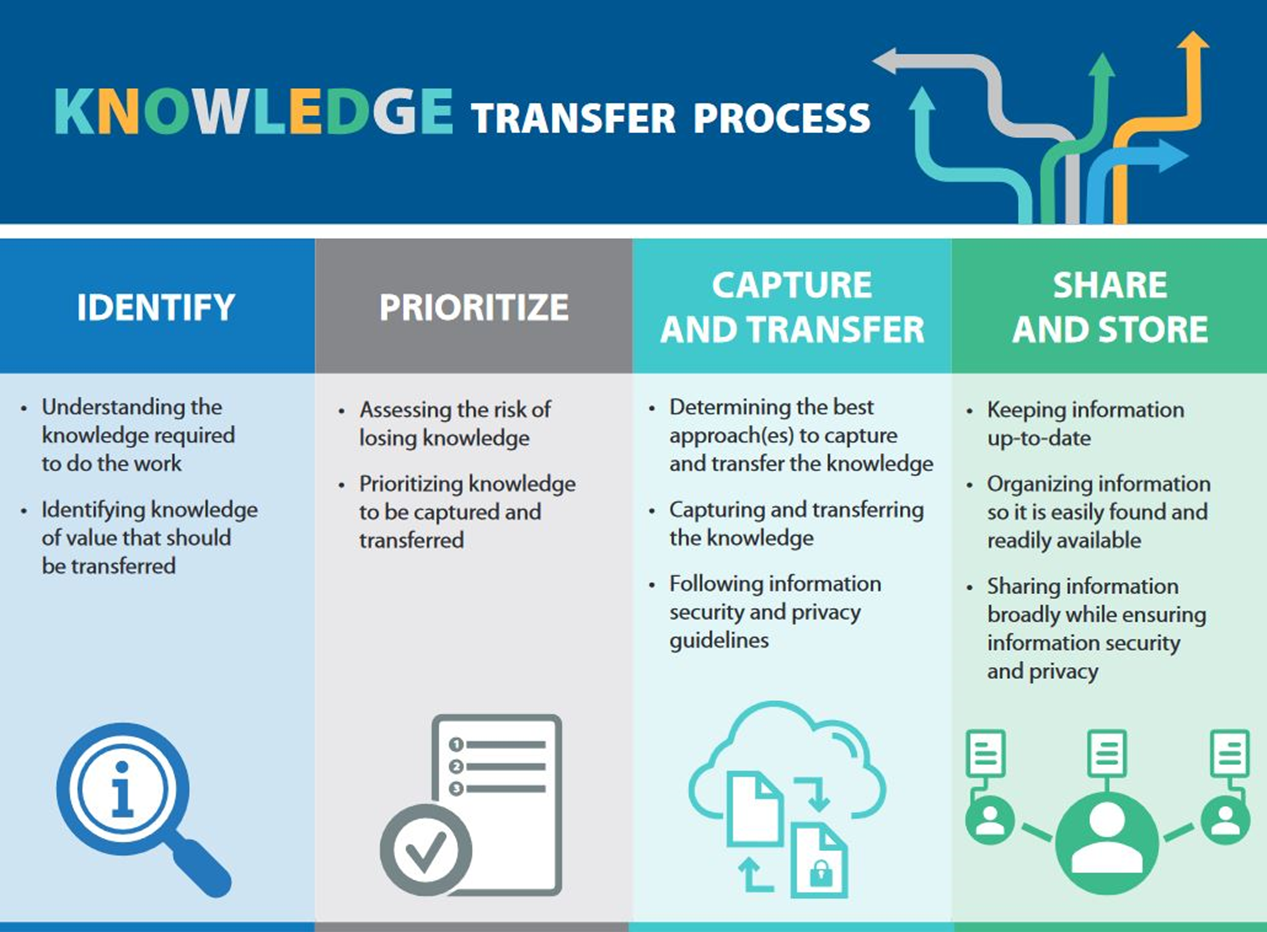Knowledge transfer process
Knowledge transfer can be done in a variety of ways.
While the specifics may differ between situations, the general Knowledge Transfer Process (PDF, 104KB) has four phases:
Phase 1: Identify
This phase involves identifying what knowledge needs to be transferred.
- Understanding the knowledge required to do the work
- Identifying knowledge of value that should be transferred. Is the knowledge tacit or explicit?
Phase 2: Prioritize
This phase involves prioritizing the knowledge that needs to be transferred based on factors, such as importance, availability, and frequency.
- Assessing the risk of losing knowledge
- Prioritizing knowledge to be captured and transferred
- Using the Knowledge Transfer Inventory Template (PDF, 58KB) to help with the prioritization process
Phase 3: Capture and transfer
This phase involves using different approaches to capture and transfer the knowledge. Often knowledge transfer occurs during the capture process.
- Determining the best approaches to capture and transfer the knowledge
- Capturing and transfer the knowledge using a variety of approaches
- Following information security and privacy guidelines
Phase 4: Share and store
This phase is essential to ensuring that the work done in the previous two phases provides ongoing value and support to your team.
- Keeping information up to date
- Organizing information so it's easily found and readily available
- Sharing information broadly while ensuring information meets security and privacy requirements
Related resources
Employees with a valid government IDIR can submit an AskMyHR service request to connect to the corporate workforce strategies team.
To submit a service request, select Myself > Career Development > Knowledge Transfer.
If you don’t have an IDIR, please contact the BC Public Service Agency.

